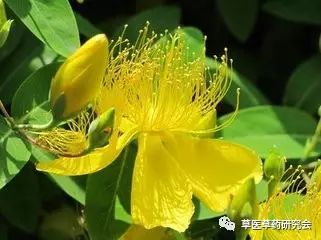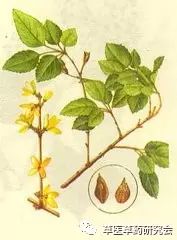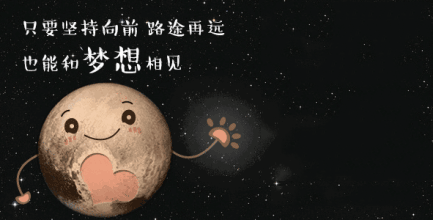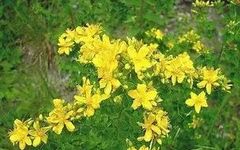 Forsythia(Latin Name: Forsythia suspensa)
Forsythia(Latin Name: Forsythia suspensa)
Morphological Characteristics
Forsythia is a deciduous shrub. The branches are spreading or drooping, brown, brownish-yellow, or light yellow-brown, with young branches being yellow-brown or gray-brown, slightly quadrangular, sparsely dotted with lenticels, hollow between nodes, and solid pith at the nodes. The leaves are usually simple or 3-lobed to trifoliate, with leaf blades being ovate, broad-ovate, or elliptical to oval, measuring 2-10 cm in length and 1.5-5 cm in width, with a sharp apex, a rounded, broadly wedge-shaped to wedge-shaped base, and serrated or coarsely serrated margins except at the base. The upper surface is dark green, while the underside is light yellow-green, both surfaces glabrous; the petiole is 0.8-1.5 cm long and glabrous. The flowers are usually solitary or in clusters of 2 to several in the leaf axils, blooming before the leaves; the flower stalk is 5-6 mm long; the calyx is green, with lobes that are oblong or oblong-elliptic, 5-6-7 mm long, with a blunt or sharp apex, and fringed edges, nearly equal in length to the corolla tube; the corolla is yellow, with lobes that are inversely ovate or oblong, 1.2-2 cm long and 6-10 mm wide; in the flowers with a pistil 5-7 mm long, the stamens are 3-5 mm long, and in the flowers with stamens 6-7 mm long, the pistil is about 3 mm long.
Fruit Characteristics
The fruit is ovoid, ovate, or long-ovate, measuring 1.2-2.5 cm in length and 0.6-1.2 cm in width, with a beak-like apex and a surface sparsely dotted with lenticels; the fruit stalk is 0.7-1.5 cm long. The flowering period is from March to April, and the fruiting period is from July to September.
Floral Characteristics
Forsythia flowers bloom in early spring, with a delicate fragrance, and the branches are adorned with bright golden flowers, making it an excellent ornamental shrub for early spring. It can also be used as cut flower material. When purchasing, choose branches with good growth.
Geographical Distribution
In China, it is found in Hebei, Shanxi, Shaanxi, Shandong, western Anhui, Henan, Hubei, and Sichuan. It grows in shrub thickets on hillsides, under forests, or in grasslands, or in sparse forests in valleys and ravines, at altitudes of 250-2200 meters. It is cultivated throughout China except for southern regions, and it is also cultivated in Japan.
Species Distinction
The main differences between Forsythia and Jasmine:
1) Jasmine belongs to the Oleaceae family and is a shrub with a bushy appearance, relatively small, with arching branches that tend to droop.
Forsythia belongs to the Oleaceae family and is a shrub or small tree, relatively tall, with branches that do not easily droop.
2) Jasmine has green young branches, while Forsythia’s young branches are darker, generally light brown.
3) Jasmine’s branches are solid with a pithy structure; Forsythia’s branches are hollow without pith.
4) Jasmine has trifoliate leaves, while Forsythia has simple or opposite trifoliate leaves.
5) Jasmine leaves grow symmetrically in a cross shape, are smaller, ovate-elliptic, entire, with a narrow and pointed apex.
Forsythia leaves are ovate, broad-ovate, or elliptical, larger, with regular coarse serrations except at the base.
6) Jasmine has six petals, while Forsythia has only four petals.
7) Jasmine flowers rarely produce fruit, while Forsythia flowers do.
Medicinal Value
[Properties] Bitter, cool.
①According to the Shennong Bencao Jing: Bitter, neutral.
②According to the Bielu: Non-toxic.
③According to the Yixue Qiyuan: The Zhuzhi Mijue states it is cool and bitter.
④According to the Gangmu: Slightly bitter and pungent.
[Meridian Entry] Enters the Heart, Liver, and Gallbladder meridians.
①According to the Tangye Bencao: Hand and foot Shaoyang, Yangming meridians.
②According to the Gangmu: Shaoyin Heart meridian, Jueyin pericardium Qi level.
③According to the Leigong Paozhi Yao Xing Jie: Enters the Heart, Liver, Gallbladder, Stomach, Sanjiao, and Large Intestine meridians.
[Functions and Indications] Clears heat, detoxifies, disperses nodules, and reduces swelling. Treats warm heat, erysipelas, rashes, abscesses, and lymphadenitis, and urinary obstruction.
①According to the Shennong Bencao Jing: Treats cold and heat, mouse paralysis, lymphadenitis, abscesses, goiter, and heat accumulation.
②According to the Bielu: Eliminates white worms.
③According to the Yaoxing Lun: Treats urinary obstruction, removes heart heat.
④According to the Rihua Zi Bencao: Unblocks the small intestine, expels pus. Treats sores and boils, relieves pain, and regulates menstruation.
⑤Li Gao: Disperses blood stasis and qi stagnation; reduces swelling.
⑥Wang Haogu: Treats deafness and tinnitus.
[Dosage and Administration] For internal use: decoction, 3-5 qian; or in pills or powders. For external use: decoction for washing.
[Precautions] Avoid use in cases of spleen and stomach deficiency, qi deficiency with fever, and in cases of abscesses that have already ruptured with thin, pale pus.
①According to the Bencao Jing Shu: Do not use if abscesses have ruptured, if there is great heat due to deficiency, or if the spleen and stomach are weak and prone to diarrhea.
②According to the Bencao Tongxuan: Long-term use may lead to cold-related issues.

[Additional Formulas]
①Treats Taiyin wind-heat, warm heat, warm epidemic, and winter warmth, with initial symptoms of heat without aversion to cold and thirst: Forsythia 1 liang, honeysuckle 1 liang, bitter root 6 qian, mint 6 qian, bamboo leaves 4 qian, raw licorice 5 qian, mustard seed 4 qian, light fermented soybeans 5 qian, burdock seeds 6 qian. Grind into a powder, take 6 qian each time, decoct with fresh reed root soup, and take when the aroma is strong, do not overboil. For severe cases, take every two hours, three times a day, and once at night; for mild cases, take three times a day, and once at night; if the illness does not resolve, repeat the dose. (According to the Wenbing Tiaobian Forsythia Powder)
②Treats all types of heat in children: Forsythia, wind protection, licorice (roasted), and mountain gardenia in equal parts. Grind into a powder, take 2 qian each time, with one medium cup of water, decoct to 7 parts, remove the residue, and take warm. (According to the Leizheng Huoren Shu Forsythia Drink)
③Treats red skin rash toxicity: Forsythia alone, decoct and drink. (According to the Yuqiao Yiling)
④Treats breast abscess and lumps: Forsythia, male mouse droppings, dandelion, and Fritillaria each 2 qian. Decoction for oral administration. (According to the Yuqiao Yiling)
⑤Treats lymphadenitis that does not resolve: Forsythia, ghost arrow feather, plantain, and licorice (roasted) in equal parts. Grind into a fine powder, take 2 qian each time, and mix with rice water before bed. (According to the Yangshi Family Collection Forsythia Powder)
⑥Treats tongue ulcers: Forsythia 5 qian, Huangbai 3 qian, licorice 2 qian. Decoction for gargling. (According to the Yuqiao Yiling)

Clinical Applications
①Treats acute nephritis
Take Forsythia6 qian, add water and simmer until150 ml, divide into3 doses before meals, reduce for children. Depending on the condition, continue for5-10 days, avoiding spicy foods and salt.8 patients had edema before treatment, blood pressure ranged from140-200/96-110 mmHg, and urine tests showed protein, granular casts, and red and white blood cells. After treatment, 6 patients had complete resolution of edema,2 showed significant improvement; blood pressure decreased significantly; urine tests showed 6 turned negative,2 improved.
②Treats purpura
Take Forsythia6 qian, add water and simmer to150 ml, divide into3 doses before meals, avoiding spicy foods. Treated 1 case of thrombocytopenic purpura and 2 cases of allergic purpura. After2 to7 days of treatment, all skin purpura resolved. The effect of Forsythia on this condition may be related to its high content of rutin, which helps maintain normal capillary resistance, reducing capillary fragility and permeability; additionally, Forsythia seems to have a desensitizing effect.
③Treats lung abscess
Prepare Forsythia as an injection, with each milliliter containing 1 gram of Forsythia. Use tracheal drip combined with intramuscular injection. Tracheal drip generally uses6-10 ml, once daily; after symptoms improve, every other day; when approaching shrinkage or closure, twice a week. Treated25 cases, cured14 cases, improved10 cases, and 1 case died; according to18 cases statistics, the average treatment duration was12 days for fever resolution, with an average of26.8 tracheal drips, the maximum being50 times.
④Treats retinal hemorrhage
Take Forsythia6-7 qian, simmer in water, divide into3 doses before meals,2 cases of retinal hemorrhage in the macular area, after taking the medicine for20-27 days, both showed significant absorption and improvement in vision.





